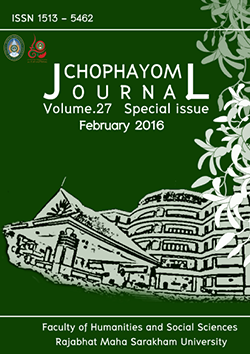A Model of Political Participation Development for People in Roi-Ed Province
Abstract
The research aimed to investigate factors affecting political participation development
of people in Roi-Ed province, to design a model of political participation development
for people in Roi-Ed province, and to implement and evaluate the model. The research
methodology was divided into three steps : contextual study, model design, and model
implementation and evaluation. The data was collected by questionnaires, and analyzed
by the computer program. The Stepwise method of discriminant analysis, canonical correlation
analysis and MANOVA (Repeated Measures) were used for hypotheses testing. The findings
showed that the factors significantly affected the political participation of people in Roi-Ed
province at the .05 level. The factors included faith in political party, trust in political rights,
convenience of transport, and catching up with political news. The model of political participation
for people in Roi-Ed province consisted of seven major activities of the three key factors.
1 Trust in political party consisted of three activities: 1.1) a training course of ideology, principles,
and relationships between political party and members, 1.2) a training course of political party
administration, and 1.3) study trip and knowledge exchange with experts in politics. 2) Catching
up with political news consisted of two activities: Thai citizenship and creating democratic
attitudes. 3) Political rights included two activities: field trip and knowledge exchange with experts
in politics. Lastly, the findings indicated that the trainees believed in the political parties,
caught up political news, trusted in political rights and participated in political issues significantly
at the .05 level






